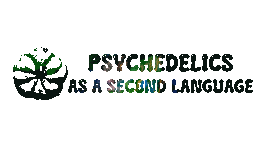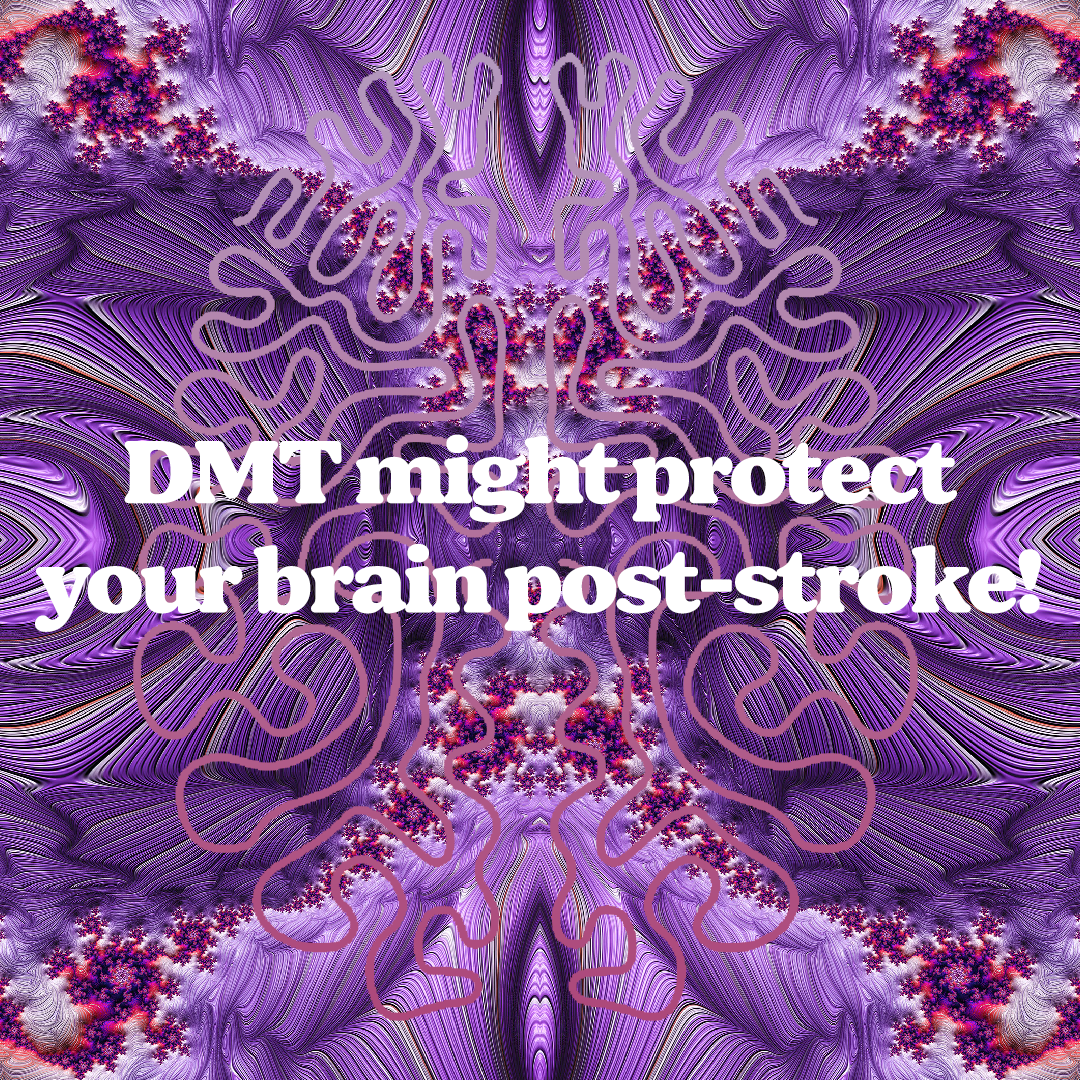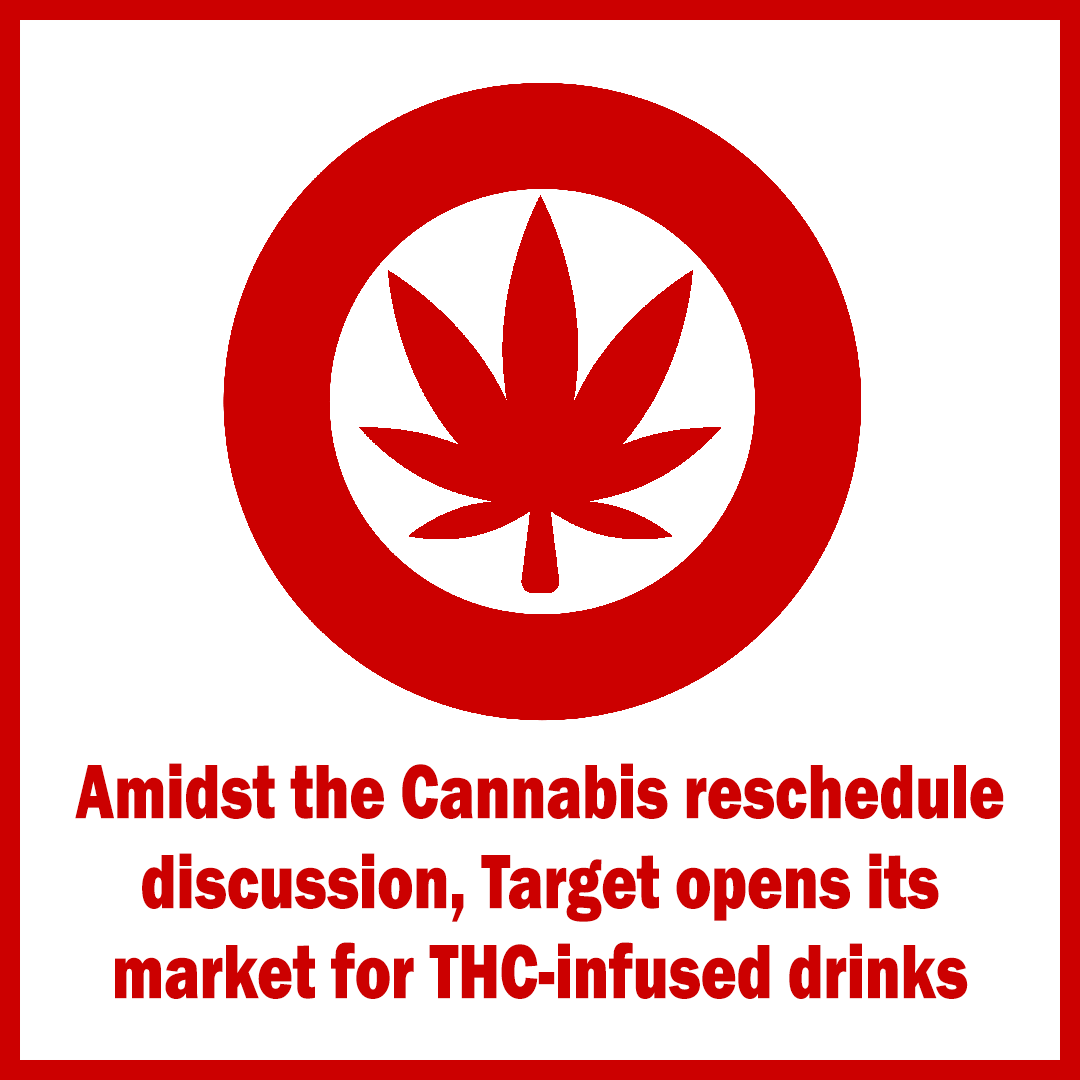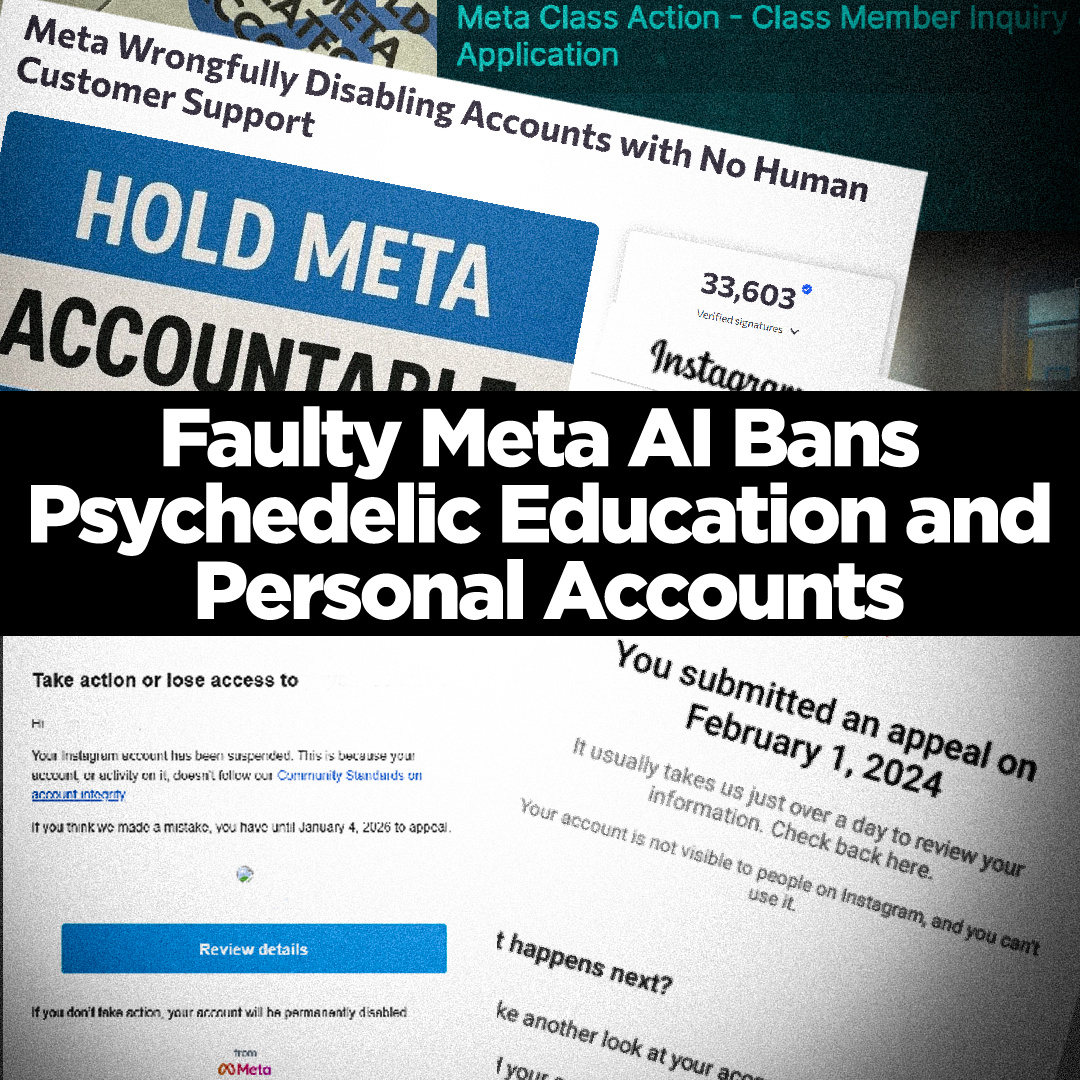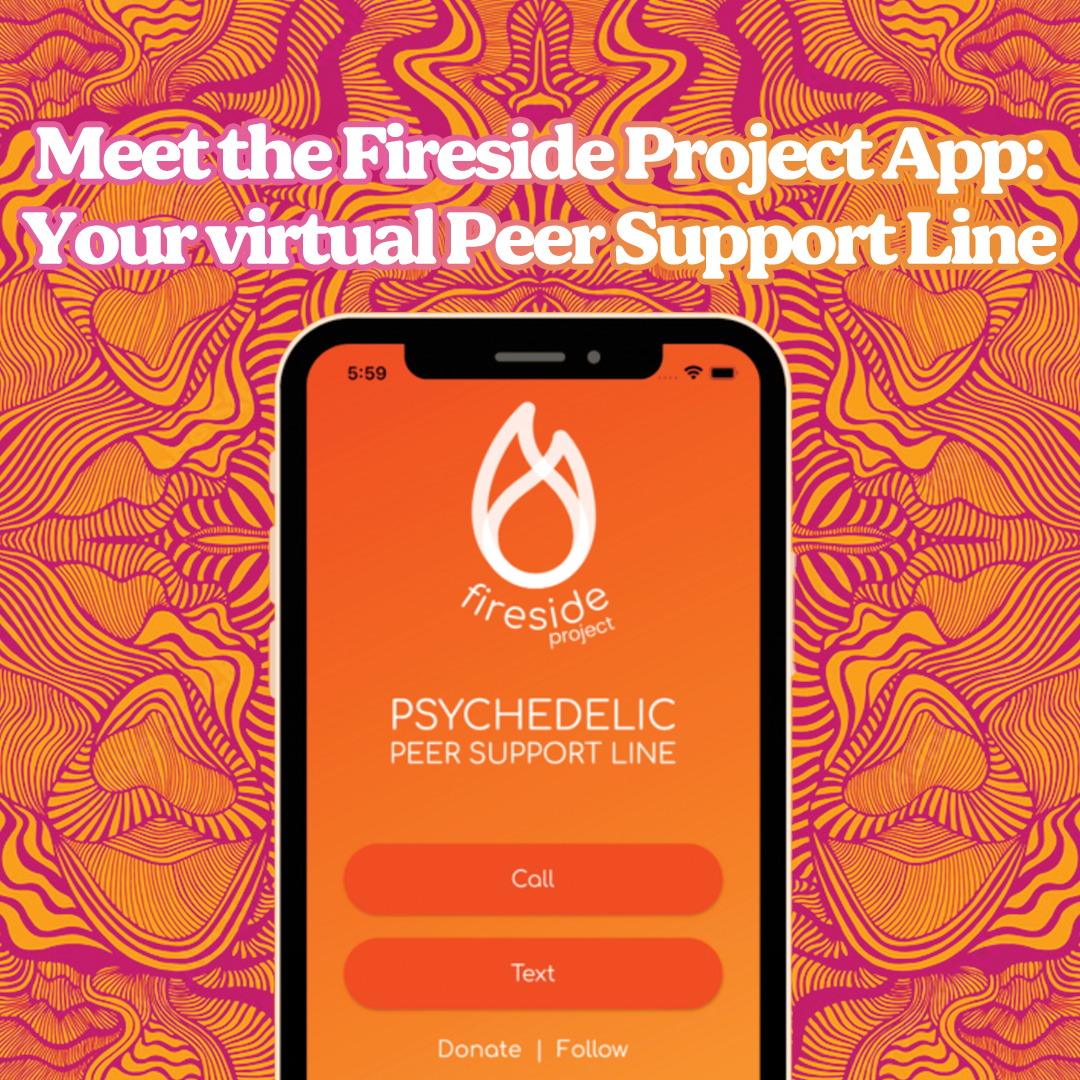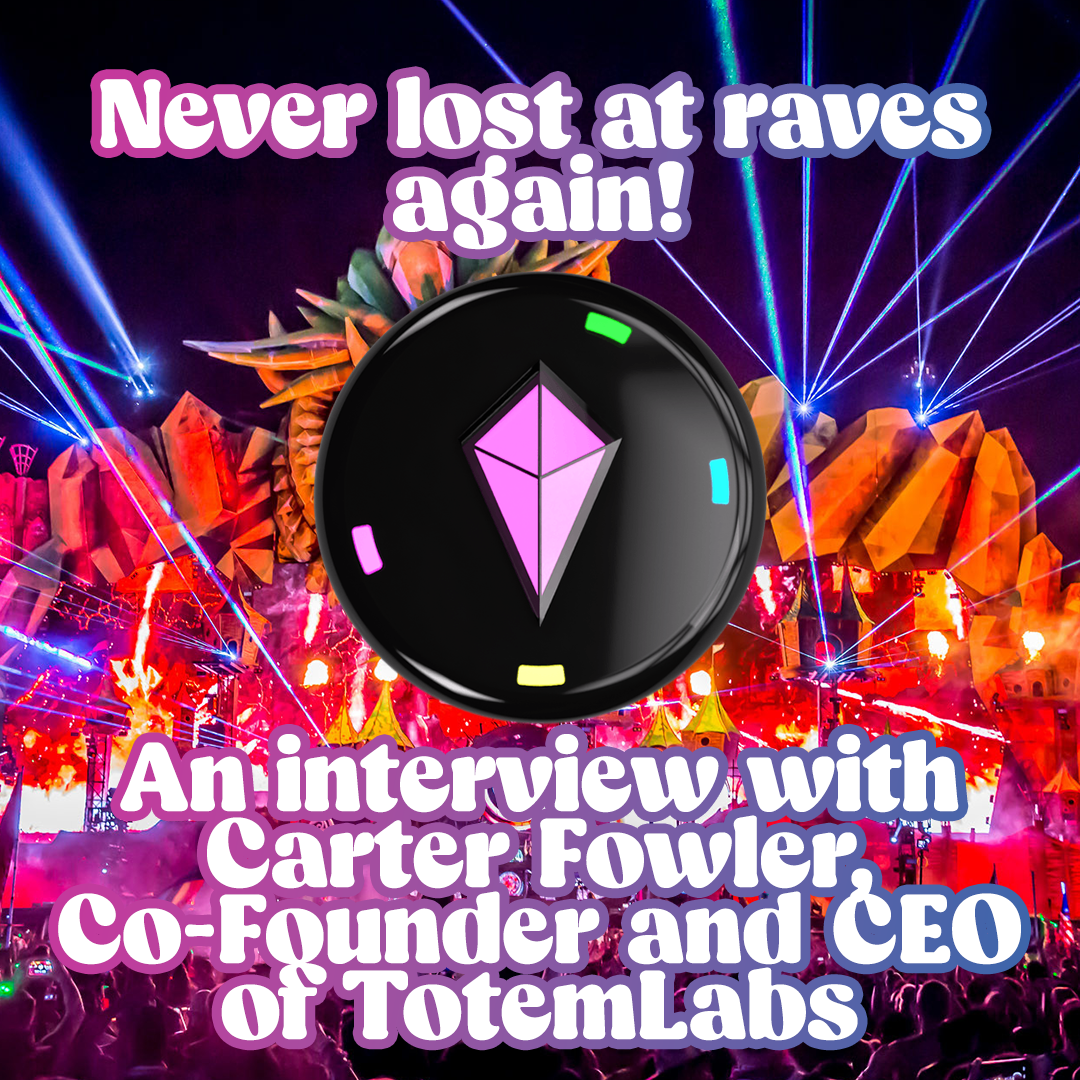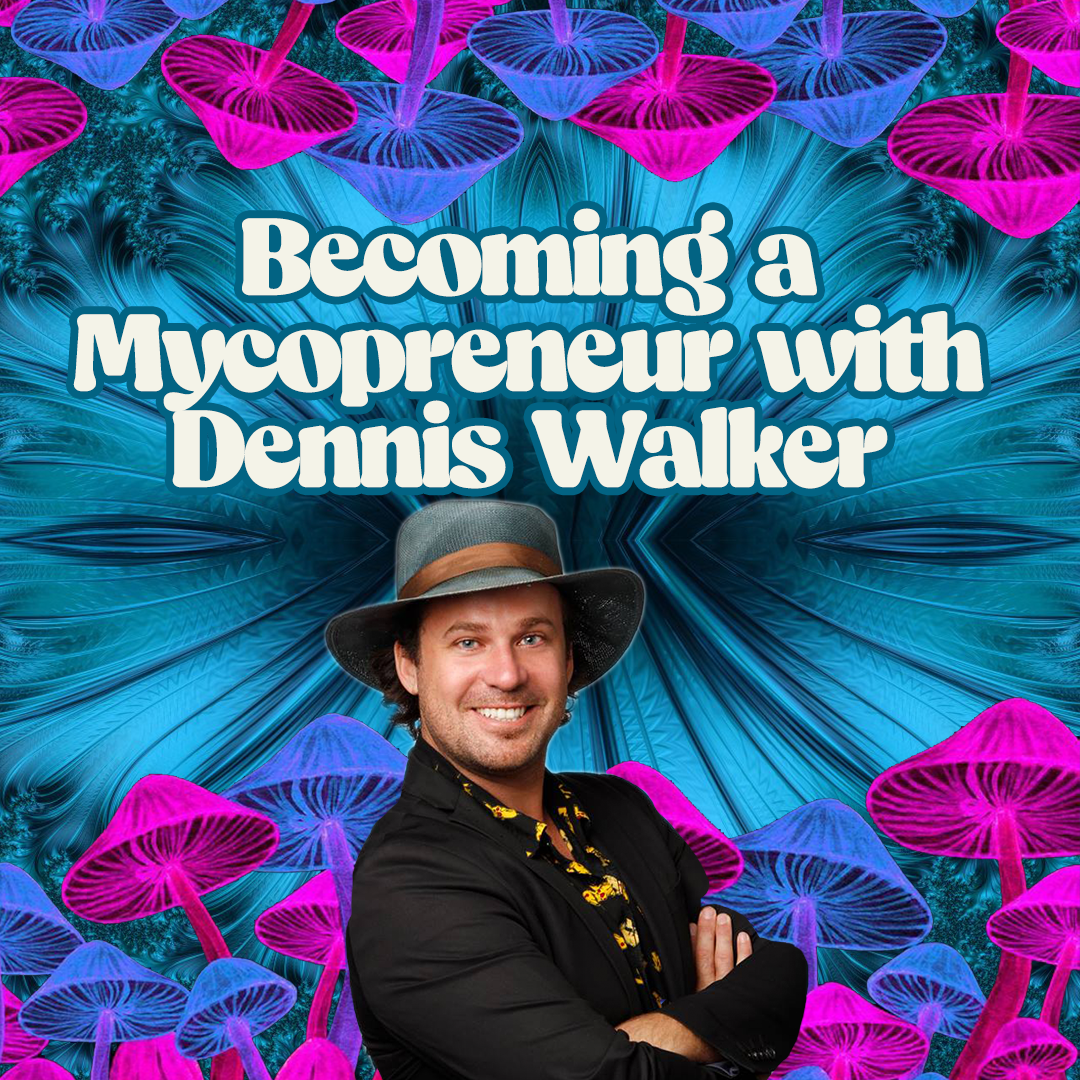Can Blue Lotus still make you lucid dream?
A story of how the Blue Lotus influenced cultural-religious beliefs and took part in religious orgies in Egypt and its progression to our modern Pharmaceuticals.
Read More
DMT might protect your brain after stroke!
The interaction between DMT and the Sigma-1 receptors has led to some interesting research, making DMT a potentially promising candidate for future stroke therapy. The compound mitigates post-stroke effects by stabilizing the blood-brain barrier and reducing neuroinflammation. Find more about how we biosynthesize DMT, and the depths of how DMT can help stroke patients here.
Read More
Amidst the Cannabis reschedule discussion, Target opens its market for THC-infused drinks.
Following last week’s article, we got massive news for Cannabis, as the retail company Target is soft-launching sales of THC-infused beverages. Yet, Cannabis laws might change and we might be facing a Ban on Cannabis products next year. Find more here!
Read More
After 100 years of propaganda Cannabis could be moved to Schedule-3
From being the “Assassin of Youth” to “Devil’s Lettuce”, a small green plant with its unique leaf shape, Cannabis has been the target of a century of propaganda tied to racial and social status discrimination. While still present in certain generations impacted by propaganda, this ideology is slowly changing in society. In May 2024, the DEA proposed to rule to move Cannabis from Schedule 1 to Schedule III. This situation was updated this year in a series of interviews on Capitol Hill in October. Learn how this can change not just Cannabis laws but potentially psychedelic laws in the future.
Read More
Labubus are now entering nightclubs
This year, the Thai Narcotics Control Board issued a warning about Labubu-shaped pills entering parties over the Songkran festival in the capital. However, they seem to be quite different from our typical party drugs. Find more here.
Read More
Faulty Meta AI Bans Psychedelic Education and Personal Accounts
For decades, the media have silenced and censored the voices of educators in psychedelic science. Today, the situation is even more challenging, as thousands of content creators focusing on psychedelics are wrongfully removed from Meta-owned platforms due to the actions of an untrained AI, alongside personal accounts unfairly accused of child sexual exploitation and many other dubious claims, with little to no human customer support, and are being harassed by the Meta Support team and unethical hackers. Learn more about why this is happening and potential ways to recover your account here!
Read More
Meet the origins of DOM (STP)
If you were born in the 1960s, you've likely heard about the compound DOM, but perhaps under a slightly different acronym, based on the oil and lubricant company STP and an abbreviation for Serenity, Tranquility, and Peace. Despite its popularity during that decade, DOM holds one of the biggest mysteries among Shulgin's creations. Find out more about the mysteries of the origins of DOM and how the molecule became forgotten in a "pharmacological oblivion" here!
Read More
JRT a new Lysergamide in the Horizon?
By altering the position of two atoms in the molecular structure of LSD, a team at UC Davis created the new compound named JRT and published the discovery on April 14th, five days before Bicycle Day. The subtle change preserved the ability of the drug to stimulate brain cell growth and repair damaged neural connections, key features in treating cognitive decline while minimizing the psychedelic effects. When given to mice, JRT has powerful neuroplastic effects and improved measures of the negative and cognitive symptoms of schizophrenia without showing behaviors and gene expression associated with psychosis. “The development of JRT emphasizes that we can use psychedelics like LSD as starting points to make better medicines. We may be able to create medications that can be used in patient populations where psychedelic use is precluded.” - David Olson, director of the Institute for Psychedelics and Neurotherapeutics and professor of chemistry, biochemistry, and molecular medicine at UC Davis. Find out more here!
Read More
Meet the Fireside project App: Your virtual Peer Support Line
Psychedelic experiences are a trip into the unknown and sometimes get out of hand or become too much to decompress or at least on your own. Fireside Project considered this and created the first app to help us during and after our trips, with over 100 volunteers to provide you with non-clinical emotional support, giving you a compassionate experience filled with knowledge about the psychedelic realms while always protecting your identity without collecting personal data. The Fireside Project line is open every day from 11:00 a.m. to 11:00 p.m. PT to everyone in the United States! Most importantly, it's free and one click away! Read more here!
Read More
Our field guide to enter the Psychedelic Space
During my journey of a decade, I've met a lot of people who knew about psychedelics, but only a smaller group of people dedicated their lives to educating themselves about these compounds. When starting your journey, it’s hard to distinguish between the two as every piece of knowledge may seem like a golden nugget. (I assume nowadays it is even more confusing to differentiate the two with the rise of AI tools such as ChatGPT.) For this reason, we decided to present you with our field guide to let you know what you should do if you are trying to integrate into the psychedelic space.
Read More
The Mystical Discovery of Telepathine: Unveiling the Secret Compound in Sacred Vine Brews
The Amazon Rainforest is home to many mysteries, especially surrounding one brew, Ayahuasca. Join us this week for an article by Fer Baray, where we'll uncover the mystical discovery of telepathine and unveil the secrets of Ayahuasca and its potential to expand consciousness!
Read More
Importance of women in the psychedelic space: with Jessika Lagarde, co-founder of Women on Psychedelics
It's Women's History Month and Women's day. Today, we celebrate by mentioning the eternal importance of women in the Psychedelic world. To do so, we spoke to Jessika Lagarde, a Trauma-informed Psychedelic Practitioner, Educator, and co-founder of Women on Psychedelics (WOOP). Join us in a conversation about adversities entering the space as a South American BIPOC woman. Her admiration and inspiration for other women in the field, the reasoning and the goals behind WOOP, how you support and become a part of this project. We discuss the F.E.M. approach the group uses in retreats to help people connect with themselves and others. How might Women’s unique experiences with trauma, mental health, and resilience shape their perspectives on the therapeutic potential of psychedelics and advice to women who want to make a difference in this field? What kind of legacy she hopes women in the psychedelic space leave for future generations and much more!
Read More
Exploring The Infinity Container with Dr. Victoria Sterkin
Is psychedelic integration worth it? To get to the depths of this discussion, we spoke to Victoria Sterkin, PhD, founder of the integration platform The Infinity Container . We discuss the aims of the project, what frameworks provide the best healing, the importance of revisiting a psychedelic experience, the future of psychedelic therapy, and much more!
Read More
Never lost at raves again: An interview with Carter Fowler Co-Founder and CEO of TotemLabs
At Festivals and Raves, you can easily split from your group. Maybe you became overwhelmed or are having a bad trip. Finding your friends can be challenging, but it doesn't have to be! This week, we interviewed Carter Fowler, Co-Founder and CEO of Totem, a device that acts as a Compass to help you find your friends at festivals and other crowded events without cell service or Wi-Fi and is 100% compatible with the rave style.
Read More
Becoming a Mycopreneur with Dennis Walker
This week, we've spoken with the satirist, journalist, and puppeteer that you may have heard about from his podcast Mycopreneur, featuring hundreds of guests from the fungal world and beyond or even from his mesmerizing TikToks satirizing psychedelic capitalism. You may have also read his articles featured in Rolling Stone, Forbes, WIRED, VICE, and High Times. We are talking about Dennis Walker! Join us for a discussion about how psychedelics influenced his life, the origins of his podcast, his passion for fungi, psychedelic capitalism, and mush more!
Read More
